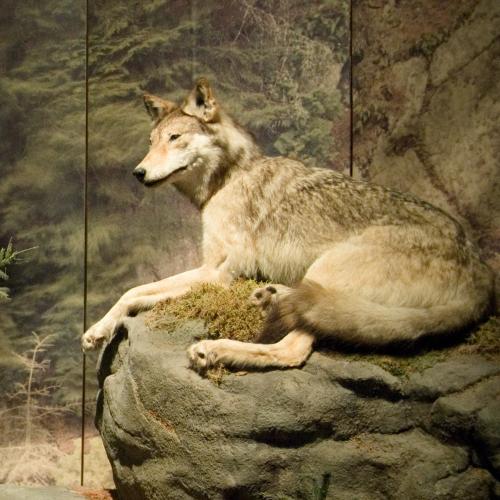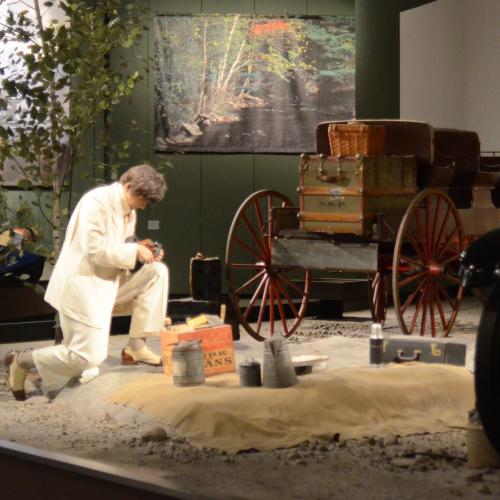
Adirondack Wilderness
A treasure of the state of New York, the Adirondack Park was created in 1892 to preserve over 6 million acres of serene wilderness. In addition to an abundance of diverse plants and animals, boreal forests, hiking trails, and lakes, the Park also boasts over 100 towns and villages, making it one of the few protected parks in which man and nature together have shaped the land and the landscape.
Prehistoric Wilderness Landscape
View stunning dioramas of animals big and small that once lived in the Adirondacks, and of a few species that are making a comeback!
Explore the Adirondacks
View the scenic terrain of the mountains through the eyes of the city dwellers who began to flood the region in the late 19th Century. With the publication of several wildnerness guides in the 1850s, the tourism industry in the Adirondacks exploded, prompting the construction of seasonal resorts and camps for wealthy vacationers.
Industry and the Environment
In the early 1800s, logging, mining and farming were powerful industries that helped shape the dynamics of the Adirondack Park as we know it today. As clear-cutting for timber and mining for iron ore tore through the pristine forests, a new group of "naturalists" emerged to argue for the protection of the region's resources and beauty.
Fun Facts: Did you know?!
- The Tug Hill Plateau in the Adirondacks receives more snow than any other region in New York.
- The largest logging operations in the Adirondacks began in the 1870s
- The plants and animals that live in the mountains vary depending on the level of elevation.
- The last New York mountain lion, once abundant to the region, died in 1908.
- Absent for over 100 years, Moose are making a comeback in upstate New York!





